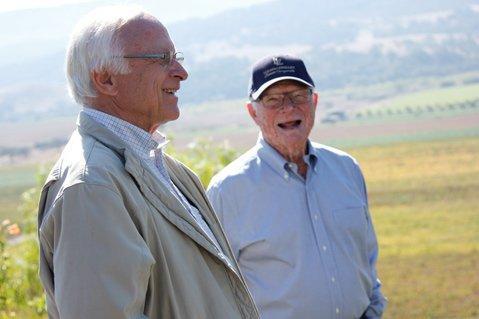April, 2017
Yesterday I was driving around the vineyards - spring has sprung. Pinot Grigio and Nebbiolo vines have at least 6-8 inches of growth already and the rest of the varieties are not far behind. We had a wet winter and with spring comes wind, sun, and a remote chance of frost. A few nights ago, I had a 34.6°F reading in a couple of our vineyards. Once pruning is finished, we will move to vineyard clean-up mode and remove grass under the vines, disc every other row, and apply the first sprays for the prevention of mildew. Early in the season we use a mixture of copper and sulphur known worldwide as the “Bordeaux Mix” to prevent mildew from starting. Most grapes are susceptible and require spraying every two weeks, especially early in the season because of new growth.
My first observation of the crop is that we do have an ample supply of grapes, not too many but we’re not in short supply either. The next time of most concern is when grapes begin to flower and there we’re hopeful for some warm days and plentiful sun.
2014 Pinot Grigio: Pinot Grigio is probably is the most widely known Italian white wine, promoted mostly in the United States by the Santa Margherita Italian version. It has become the second most popular white wine variety in the west after Chardonnay. Ours is grown at our cool Los Alamos Vineyard which gives it a crisp fresh flavor and a surprising nose. To me, our 2014 is starting to show the refinement of a mature white wine. It seems that in the marketplace, the emphasis has been on how fresh and young you can make a white due to the major producers growing the grapes in a warmer climate than we do. Recently I did a tasting between our Pinot Grigio and our Ramato (Pinot Grigio with skin contact) and it was amazing to see that skin contact definitely makes a completely different wine. Both wines showed extremely well. I like Pinot Grigio with an arugula salad and eggplant parmesan. When I was a kid, my mother could make steak out of eggplant!
2014 Dolcetto: If you were to ask me which of these three wines would be my favorite, I’d choose this, one of the best Dolcettos we’ve made. Grapes were picked with great maturity resulting in an alcohol of 13.9%, which can be difficult to do with this variety. Usually it wants to quit maturing due to the larger sized grape clusters being more difficult to get fully ripe. When we work with the variety, we remove all excess bunches and if we think the bunch is too big, we cut it in half. In Italy, if you can get Dolcetto above 13.5% alcohol, it’s given a “superiore” designation. Full of flavor, this is the Italian grape with the lowest acid. It’s great with anything covered by tomato sauce.
2012 Barbera: A Tasting Room favorite - bold in color, jammy in character, and a good example of what Barbera should be. It comes from vines that are 40 years old. The age of the vines makes for smaller grape clusters and added intensity of color and flavor. Barbera is one of the Italian grapes with higher acidity which means we need a longer hang time in the vineyard for the acids to fall and to get it really ripe. Barbera is very susceptible to rain damage which causes us to have some variation from year to year. Serve with salami, prosciutto, rack of lamb, and Italian sausage.
We are embarking with our Wine Club on our Rhone River Cruise starting in Leon and working our way down to Avignon. Jill and I will spend another 5 days in Provence, the land of great rosés and food.Looking forward to the task! Hope to see you all at the Vintners Festival later this month.
